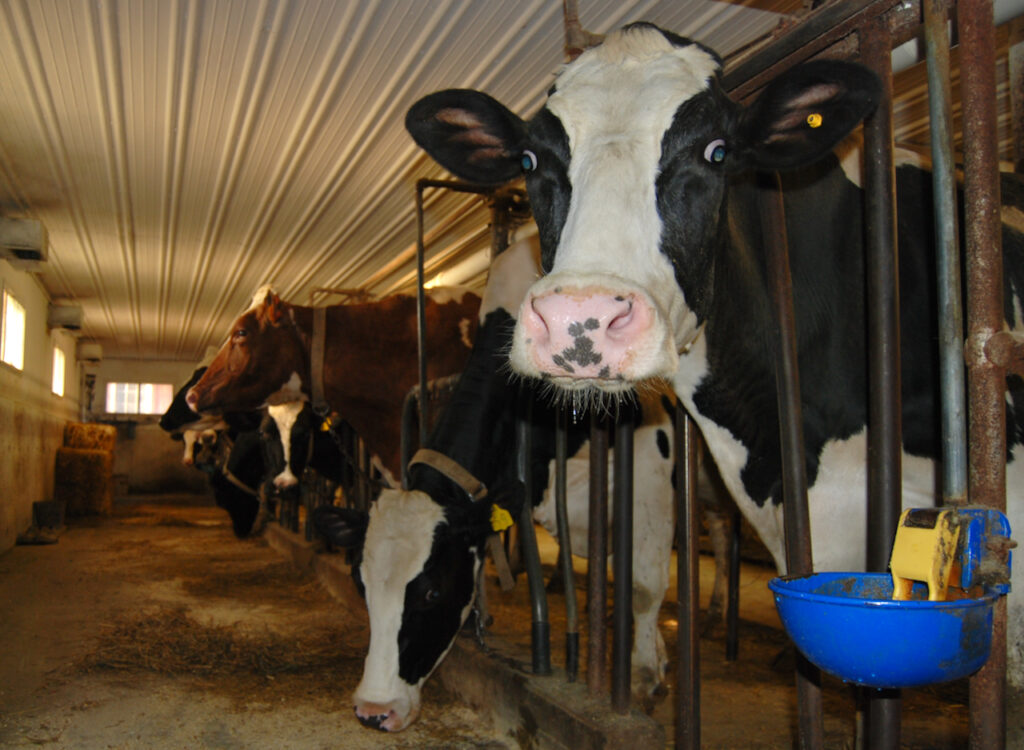By Anita Martin
Across the U.S., and over the last month, more pieces have been added to the bird flu puzzle, as dairy cattle in California have been infected, as has a Missouri resident whose source of exposure has yet to be determined.
In less than four weeks, H5N1 avian influenza outbreaks hit more than 34 dairy herds in California, the 14th and most recent state with reported dairy farm infections. Last week, more than 62,000 commercial turkeys also perished in Merced County, Calif., which is in the San Joaquin Valley, where most of the state’s dairy cattle live.
Additionally, avian flu struck 2,500 live birds in a live bird market in Hillsborough County, Fla. last week.
Wild bird confirmations in the last 16 days have included snow geese, various types of ducks — from wood ducks to American black ducks — California quail, and owls. States with confirmed live bird deaths or hunter-harvested mortality during this recent period include Alaska, California, Colorado, Idaho, Iowa, Missouri, New Mexico, Oregon, New York, South Carolina, and Wyoming.
The fatalities in commercial poultry, backyard flocks, and live markets in Florida as well as New York, keep rising, raising questions as to how and when a rapidly evolving H5N1 situation will end. The latest statistics show that 100,778,951 poultry have died in the United States since early 2022.
Dairy culling rates are unclear
While we know from official sites that, this year, bird flu has impacted 213 dairy herds in 14 U.S. states, what’s lacking is data on the number of cows infected, and how many have recovered or died.
Following this columnist’s research, it doesn’t appear that the culling rate is currently publicly available, but some numbers in circulation place recent culling rates for infected herds at 2% to 5%. The American Veterinary Medical Association says the culling rate is 2%. A story from the association is here: https://www.avma.org/resources-tools/animal-health-and-welfare/animal-health/avian-influenza/avian-influenza-virus-type-h5n1-us-dairy-cattle.
Reports from various online industry-related publications suggest the culling rate may be within the 5-10% range, depending on a number of factors. A story published in Farmprogress.com explores Michigan farmer Nathan Brearley’s experiences six months after bird flu infected his 500-head herd. He noted that 5% of his herd was culled. The full story is here: https://www.farmprogress.com/animal-health/avian-flu-outbreak-devastates-michigan-dairy.
In a “Successful Farming” story, Chuck Abbott discusses the culling rate and costs incurred in combating the virus, reported to be considerably more than the current USDA (United States Department of Agriculture) funding available for individual farmers. The full story is here: https://www.agriculture.com/dairy-worker-in-michigan-has-bird-flu-in-second-case-of-cow-to-human-infection-8652881
Additional information about the topic is here: https://www.dairyglobal.net/world-of-dairy/farm-visits/farm-report-michigan-us-what-its-like-to-have-bird-flu-in-the-dairy-herd/ and here: https://www.reuters.com/world/us/cows-infected-with-bird-flu-have-died-five-us-states-2024-06-06/.
As of this month, the USDA Food Safety and Inspection Service (FSIS) has added dairy-beef surveillance programs, through which it plans to test culled dairy beef cattle for H5N1 avian influenza virus.
A Missouri resident is hospitalized
Over the Labor Day weekend, news sources reported that a Missouri patient was recently released from the hospital after recovering from what was eventually confirmed as H5N1 bird flu. To date, no known exposure to a sick or diseased animal has been identified, leading some in the medical profession to advance theories as to how the patient contracted the disease. It also was reported that the patient has a known underlying medical condition.
Regarding the case, “USA Today” interviewed Michael Osterholm, an epidemiologist and director of the Center for Infectious Disease Research and Policy, who works with the University of Minnesota. The publication reported that Osterholm said the patient “likely caught a different strain of the virus after coming in close contact with an infected migratory bird.” This may have occurred, Osterholm theorized, at a backyard bird feeder since the migratory season was already underway.
Another theory, offered by a Kansas-based infectious disease specialist, asserted that the patient may have had exposure to the virus through a pet, such as a dog or cat, that may have encountered an H5N1-infected animal while outdoors.
Other experts asked whether the patient might have encountered virus-containing fecal material while hiking, which he then may have unknowingly carried into his home on his shoes.
Following such recent developments, experts like Matthew Binnicker, Ph.D., with the Mayo Clinic, and others in the U.S. and elsewhere, have been asking more questions about potential pathways to avian flu infection. Binnicker and William Schaffner, M.D., with Vanderbilt University Medical Center, are quoted within a story published in physiciansweekly.com. The story is here: https://www.physiciansweekly.com/second-health-care-worker-linked-to-missouri-bird-flu-case-also-had-symptoms-cdc/
What’s happening in Wisconsin?
Advisory information provided by the Wisconsin Department of Natural Resources for distribution to hunters is here: https://www.wbay.com/2024/09/16/wisconsin-reminds-hunters-weapon-safety-animal-diseases/
In Jefferson County, Health Department Director/Health Officer Elizabeth McGreary, corresponding through email with this columnist, noted that Fort Healthcare is sending “all positive influenza specimens to the WSLH (Wisconsin State Lab of Hygiene) for subtyping.”
The director said she also has been in touch with another regional medical center to learn more about its process.
“I want to be assured that we are catching cases similar to the one you outlined,” McGreary stated in her email.
This is certainly good news, and reassuring as we continue to face this ever-changing, increasingly complex zoonotic virus evolution.
Those interested in learning more about bird flu are encouraged to join a free webinar, which will be held Wednesday, Oct. 2, between 1 and 2 p.m. through use of the following link: https://www.cdc.gov/one-health/php/zohu/index.html .
Anita Martin is a longtime freelance journalist whose work has appeared in such publications as the Waterloo/Marshall Courier, The Madison Times, Agri-View, Dane County Lifestyles (formerly 50 Plus Lifestyles newsmagazine), Verona Press and Wisconsin Woman magazine, covering such topics as health and wellness, and women’s and multicultural issues. More recently, she has developed interest in such topics as environmental issues, avian influenza and other zoonotic diseases, and public health.

